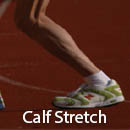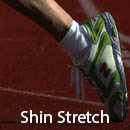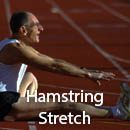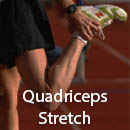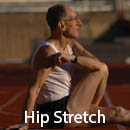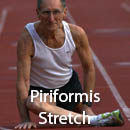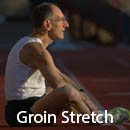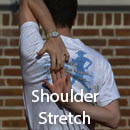Stretching
Introduction
Always stretch when you have finished working out. When your muscles are tired they become tight bands that fight you, resisting forward progress. In contrast, when you loosen your muscles by stretching, you facilitate relaxed, efficient race walking; prevent injuries; and increase your range of motion. If that is not reason enough, stretch just because it feels good!
Be patient while stretching. Make certain to use good technique, as improper form leads to stretching—and possibly overstretching—the wrong muscle group.
Generally, unless otherwise noted, the stretches below should be held for 20 to 30 seconds, one limb at a time. Symmetry is key. Always start with the least flexible limb, as human nature leads you to focus longer and more attentively on the first stretch. Otherwise, by repeatedly stretching the more flexible limb—as many people do—you increase any imbalances.
Remember, stretching prior to walking is not recommended, because stretching cold muscles is less effective and leads to injuries. Instead, to warm up muscles before walking, practice the Dynamic Flexibility Drills.

Take care not to bounce your joints in an attempt to achieve a deeper stretch. You need only stretch far enough to feel your muscles elongate. If you start to feel pain, stop. You should not stretch to the point of pain.
![]()
About the Model
While Jack Starr is my race walking idol, he does claim to be the least flexible person on earth. (Yes, a slight exaggeration.) So why select him as a model to demonstrate the proper way to stretch? Simple. In almost every demonstration, he shows exactly how to stretch correctly. If he can do it, so can you. Whether you stretch as far (or farther) than Jack is determined by your individual flexibility. In any case, use the same form as Jack demonstrates. Notice that in two cases, Jack uses a towel for assistance in stretching a particularly tight muscle group. Such aides enhance his ability to reach a correctly extended position. You see alternative stretches utilizing props where your lack of flexibility may cause you to require some assistance.
About the Stretches
Each stretch lists Importance and Intensity levels at Low, Medium, or High. Those stretches indicated as high importance should be done after every workout, while ones at low importance are used as needed for muscle tightness or injury recovery. Low importance stretches can also be alternated, cycling through the list a few each week as time permits.
Intensity specifies the forcefulness of the stretch. Lower intensity stretches are good for beginners or those with a particularly tight area that needs loosening. High intensity stretches are meant for advanced walkers who are at least semi-flexible in the area of concern.

